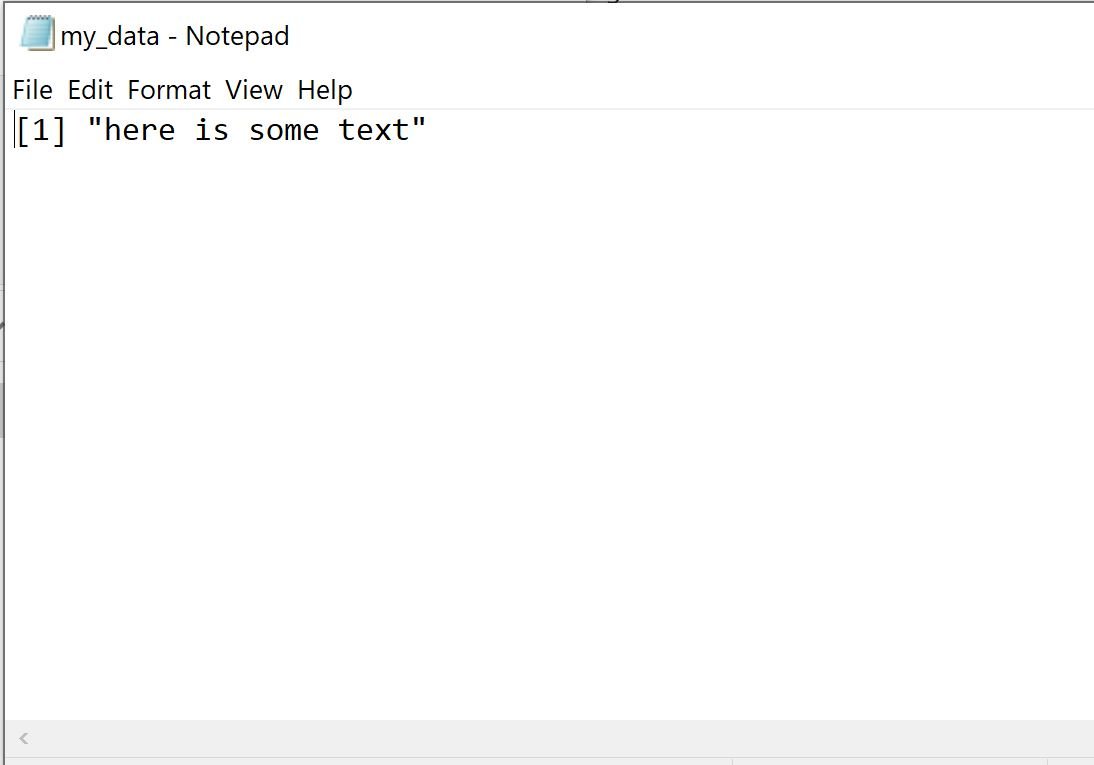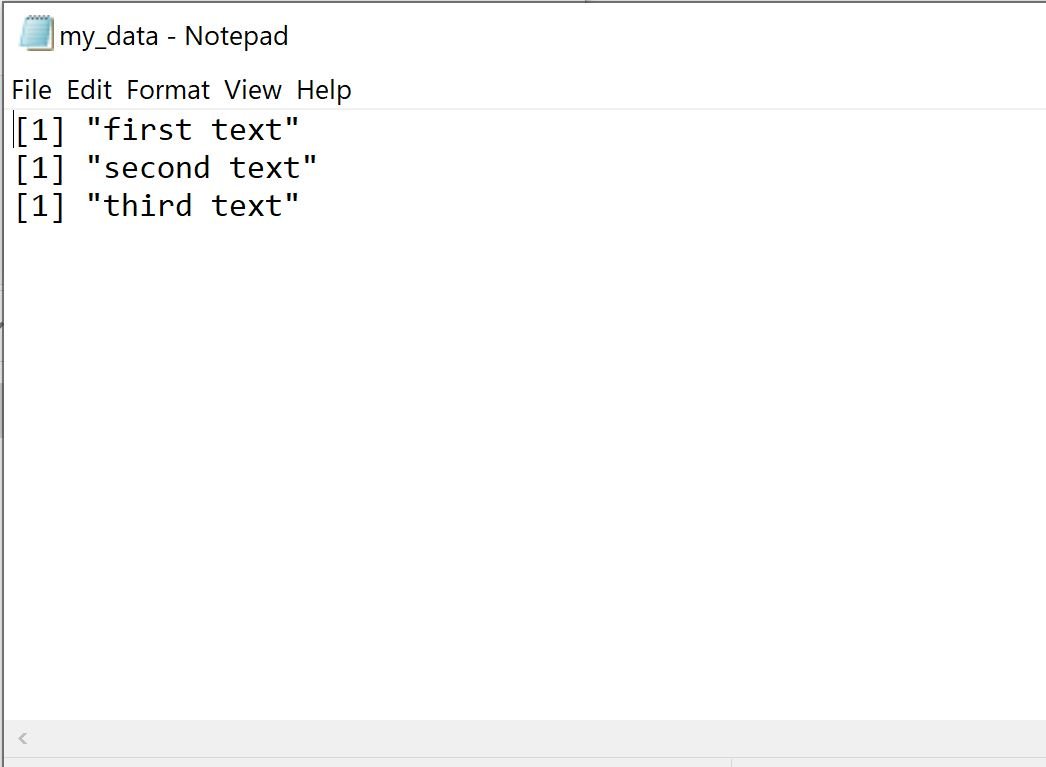You can use the sink() function to drive R output to an external connection.
This function is useful because it lets you easily export character strings or data frames to a CSV file or text file.
This function uses the following basic syntax:
#define file name
sink("my_data.txt")
#write this text to file
"here is some text"
#close the external connection
sink()
The following examples show three different ways to use this function in practice.
Example 1: Use sink() to Export String to Text File
We can use the following sink() function to export a character string to a text file:
#define file name
sink("my_data.txt")
#write this text to file
"here is some text"
#close the external connection
sink()
We can then navigate to the current working directory and open the text file:
The file contains the string that we specified.
We can also export several character strings to a text file:
#define file name
sink("my_data.txt")
#write several strings to file
"first text"
"second text"
"third text"
#close the external connection
sink()
We can then navigate to the current working directory and open the text file:
The file contains the three strings that we specified.
Example 2: Use sink() to Export Data Frame to Text File
We can use the following sink() function to export a data frame to a text file:
#define file name
sink("my_data.txt")
#define data frame to write to file
df frame(player=c('A', 'B', 'C', 'D','E'),
points=c(12, 29, 24, 30, 19),
assists=c(5, 5, 7, 4, 10))
print(df)
#close the external connection
sink()
We can then navigate to the current working directory and open the text file:
The file contains the data frame that we created.
Example 3: Use sink() to Export Data Frame to CSV File
We can use the following sink() function to export a data frame to a CSV file:
#define file name sink("my_data.csv") #define data frame to write to file df frame(player=c('A', 'B', 'C', 'D','E'), points=c(12, 29, 24, 30, 19), assists=c(5, 5, 7, 4, 10)) print(df) #close the external connection sink()
We can then navigate to the current working directory and open the CSV file:
The CSV file contains the data frame that we created.
Additional Resources
The following tutorials explain how to perform other common tasks in R:
How to Export a Data Frame to an Excel File in R
How to Export a Data Frame to a CSV File in R






